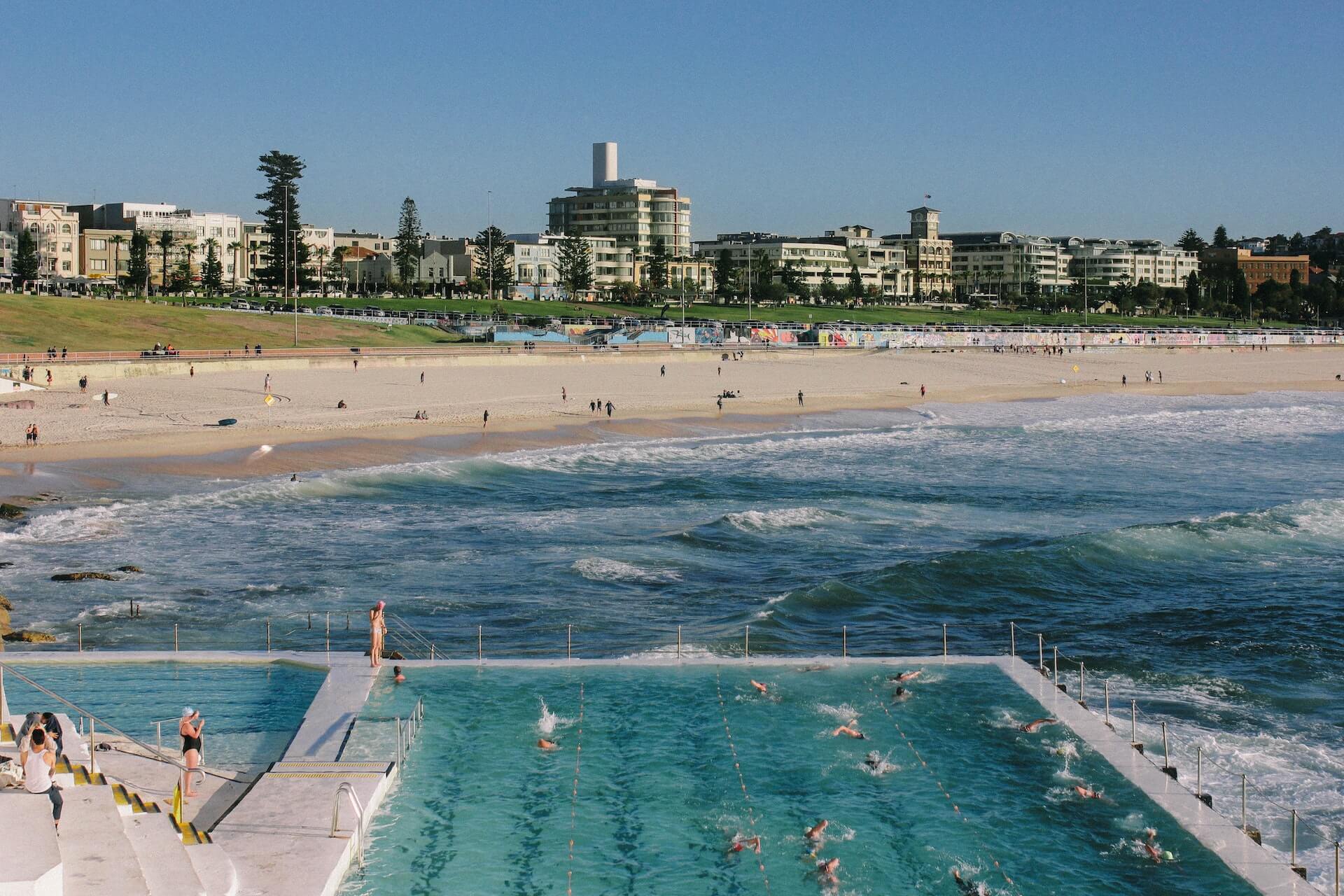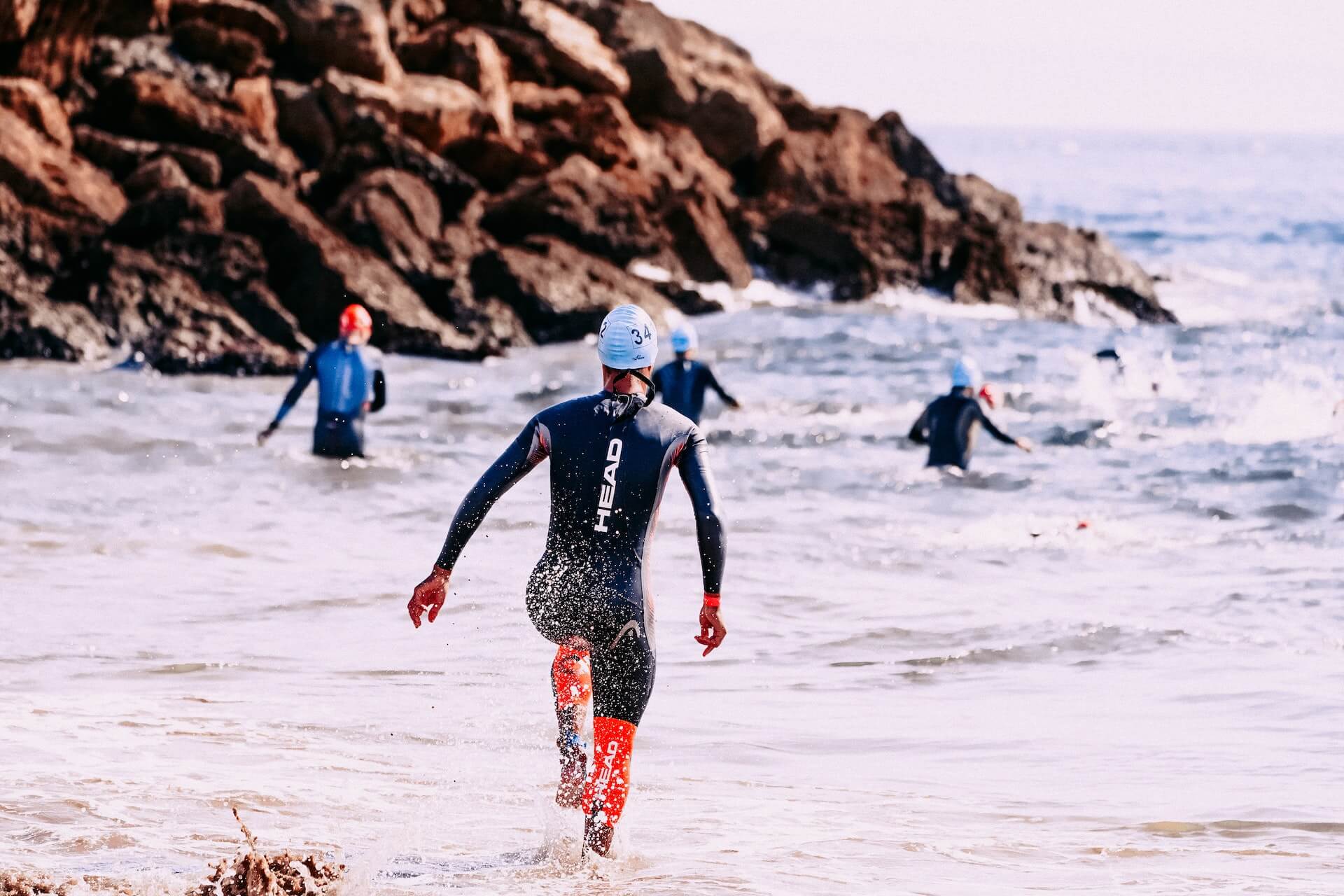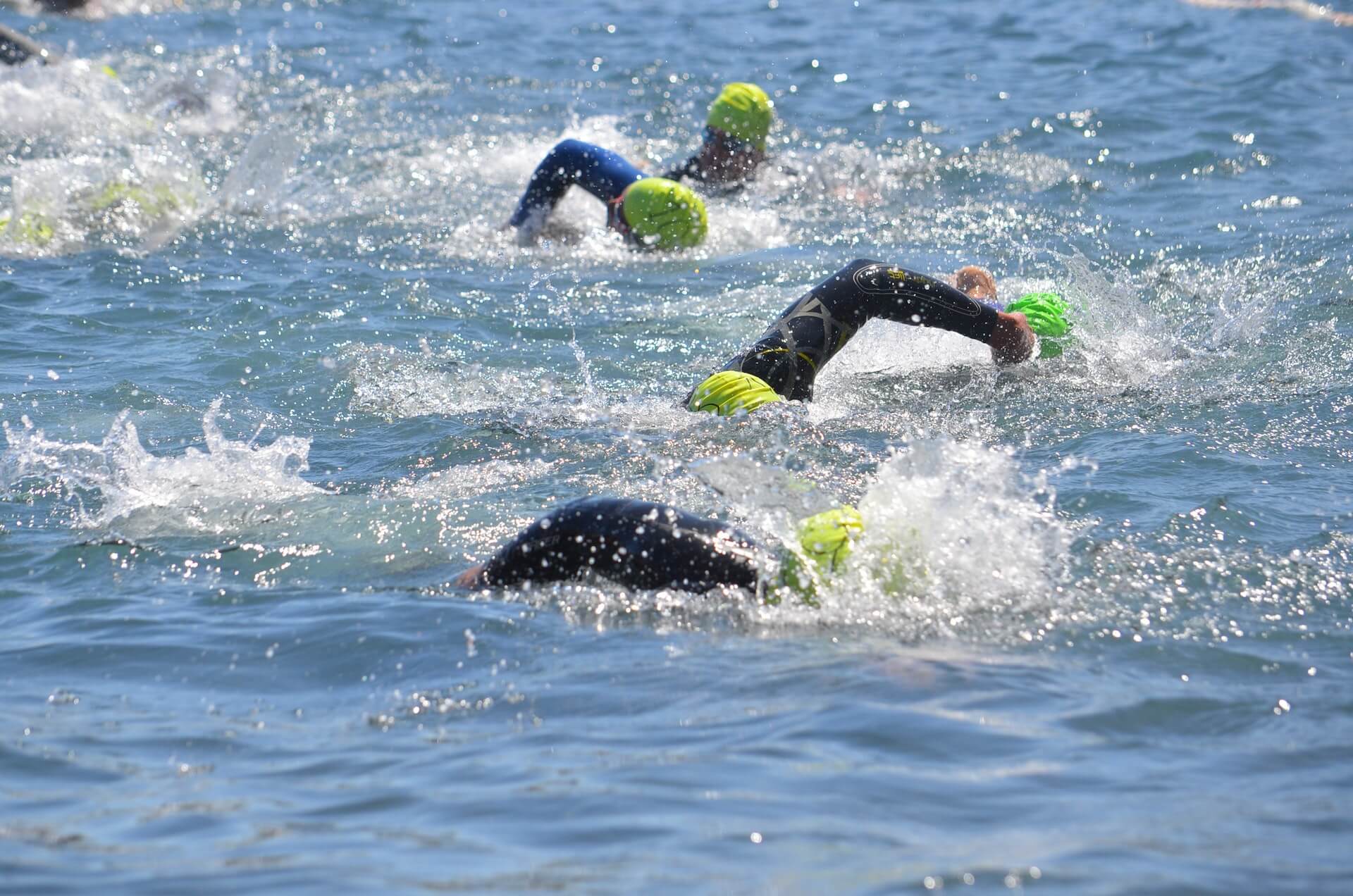Many people wonder how swimming indoors compares to the outdoors, specifically in the open water such as the ocean, sea, or a large lake. Is one more difficult than the other?

Swimming indoors, you have the luxury of a controlled environment with clear water, lane lines, and constant temperature. Conversely, swimming outdoors, you’ll encounter changing water conditions, varying temperatures, and the possibility of waves and currents, which can require greater effort and adaptability. The lack of walls for resting seals the deal: open water swimming is harder than pool swimming.
In this article, we will explore the main differences between open water and pool swimming and provide some insight into their respective challenges.
Challenges in Open Water Swimming

In this section, we will go over the top reasons why open water swimming is harder than in a pool. In another section, we will go over how you can overcome these challenges.
Managing Currents and Tides
In open water swimming, one of the first challenges you’ll face is dealing with currents and tides. Unlike swimming in a pool, where the water is calm and controlled, open water currents can be unpredictable and vary in strength. This can greatly affect your swimming pace, technique, and overall performance. You’ll need to adapt your swimming style to account for the push and pull of the water.
Dealing with Wind and Waves
Another challenge related to open water swimming is coping with wind and waves. Wind can create surface chop, making it difficult to maintain a steady and smooth stroke. Moreover, waves can make it harder to breathe, as they can cause water to splash or crash into your face.
A risky situation is when a wave splashes on your face at an inopportune time, such as when you are just about to breathe. If you end up swallowing water or just can’t take a breath, you might panic and make mistakes that can lead to drowning.
Water Temperature and Weather Challenges
Open water swimming exposes you to fluctuating water temperatures and changing weather conditions, which can be a challenge for some swimmers. Cold water may cause muscle cramps or make it difficult to regulate your body temperature.
Sudden rain can cause the temperature to drop quickly and reduce your visibility in the water. Gusts can also drop the temperature quickly and introduce heavy swell.
Generally speaking, swimming outdoors will almost always be colder than indoors because it is not temperature-controlled. Furthermore, it can take a long time for water to heat up, so even if the weather feels nice and toasty, the water might still be too cold to swim in without a wetsuit.
Navigational Challenges
In a pool, it’s easy to maintain a straight path by following the lane lines, but in open water, there are no such markers. This can make it difficult to maintain your direction and stay on course, especially during long swims or races. Strong currents and swell can also affect your navigation, so be prepared to adjust your course accordingly.
Fear of the Open Water
For some swimmers, the mere thought of venturing into the open water can be daunting. Factors such as deep water, unknown creatures, limited visibility, and feeling alone can create anxiety or fear.
Confident swimmers can sometimes feel like, because they know how to swim and even consider themselves to be strong swimmers, that they can easily jump into the ocean and start swimming. However, upon realizing that they don’t have the safety net of walls to rest on or lifeguards keeping watch over them, they might start to feel incredibly nervous and lose their confidence.
Potential for Boat Collisions
Boat traffic can also be a hazard when swimming outdoors, particularly during busy seasons or in popular waterways. Stay attentive, sport brightly colored swim caps or buoys to be visible, and always swim with a buddy or as part of a group when possible. If there is heavy boat traffic, it may even be prudent to swim elsewhere.
Adapting Your Technique

While both pool and open water swimming share the basic principles of swimming, there are a few adjustments to consider when transitioning between these different environments, which we will cover right now.
Breathing Techniques
One essential skill you must learn for open water swimming is bilateral breathing, or breathing on both sides, as it is crucial for maintaining balance, improving coordination, and making it easier to navigate.
To develop this skill, practice breathing every three strokes, alternating which side you take in air. This way, you’ll become comfortable taking in air from both sides while keeping your eyes on any obstacles or changes in water conditions.
Sighting and Navigation
Sighting is the ability to look up and identify your surroundings while swimming, like checking for buoys and other landmarks. As you can imagine, this is another crucial skill to know for open water swimming to ensure you don’t go off course.
To sight effectively, integrate a quick glance with your regular breathing cycle – lift your head and gaze forward just enough to spot landmarks without disrupting your stroke rhythm. Focus on easily identifiable objects, such as trees, buildings, or unusual-shaped embankments, especially in rough water.
Stroke Modification
Swimming in open water might require you to modify your stroke to handle various conditions like waves, currents, and other swimmers nearby. A slightly shorter and faster stroke can be beneficial in maintaining momentum and avoiding obstacles.
Additionally, pay attention to your arm recovery by clearing your hands higher above the water to avoid dragging them through waves, while also preserving energy. Flexibility and the ability to adjust are vital aspects of open water swimming.
Pacing
Pacing can play a significant role in your success during open water swims. Unlike pool swimming, where lanes and walls create consistency, open water presents unpredictable elements that require careful adaptation.
To improve your pacing, start at a comfortable pace, taking time to acclimate to the water conditions, and gradually increase your speed based on your comfort and energy levels. Monitoring your pace helps conserve energy in adverse conditions and keeps you in control of your swim in wavy open water situations.
Frequently Asked Questions
How does temperature affect swimming performance in open water vs. a pool?
Water temperature can have a significant impact on your swimming performance. In open water, the temperature can vary widely and affect your breathing, muscle performance, and body’s ability to regulate temperature. In comparison, pool temperatures are generally consistent and regulated to provide optimal conditions for swimmers. You’ll need to adapt to the changing conditions when swimming in open water, and keeping warm or cool may become more critical depending on the temperature.
What are the main technique differences between open water and pool swimming?
Open water swimming requires different techniques and skills compared to swimming in a pool. You’ll need to learn how to sight efficiently to navigate in cloudier waters and improve your breathing techniques to minimize water intake. Additionally, open water swimming often involves dealing with waves, currents, and other environmental factors that can influence your stroke and body positioning. In a pool, you can focus on technique and pace in controlled, calm water.
Why do people tend to swim slower in open water compared to a pool?
Swimming in open water can be harder for a variety of reasons. The uncontrolled water conditions, such as waves and currents, can slow you down and affect your stroke efficiency. You also have to navigate and adjust your body position more frequently in open water, which can further reduce your speed.
Is it more challenging to swim in a lake or ocean than a swimming pool?
Yes, swimming in a lake or ocean is generally more challenging than swimming in a pool. Open water environments have uncontrollable factors like waves, currents, water temperature fluctuations, and lower visibility. These challenges require a different skill set and make it harder to maintain a consistent pace and technique compared to pool swimming.
What are the disadvantages of open water swimming compared to pool swimming?
Some disadvantages of open water swimming include dealing with unpredictable water conditions and environmental factors, the potential for disorientation due to lower visibility, increased difficulty in maintaining a consistent pace, and potential hazards such as marine life or debris. Pool swimming offers a more controlled environment, allowing you to focus on technique and pace without these extra challenges.
How do open water and pool swimming times typically compare?
Open water swimming times can be harder to compare with pool swimming times due to the differences in conditions, navigation, and environmental factors. Your open water swim times may be slower as a result of these challenges and the need to modify your technique to accommodate the unique open water conditions.
Sources:
- https://www.swimming.org/masters/differences-coaching-pool-open-water-swimming/
- https://www.usms.org/fitness-and-training/articles-and-videos/articles/how-to-swim-freestyle-in-the-pool-or-open-water
- https://www.usms.org/fitness-and-training/articles-and-videos/articles/how-to-swim-in-wavy-open-water-conditions
- https://www.outsideonline.com/outdoor-adventure/water-activities/open-water-swimming-guide/
- https://www.trainingpeaks.com/coach-blog/6-reasons-why-open-water-speed-may-not-translate-to-the-pool/
